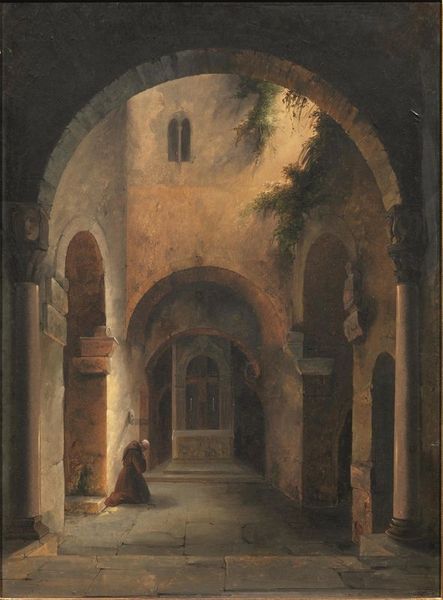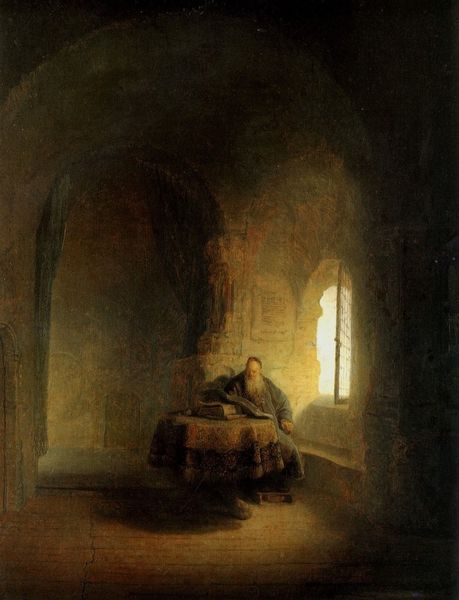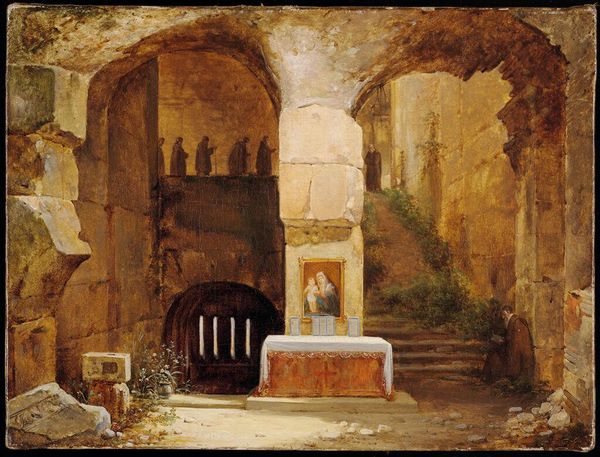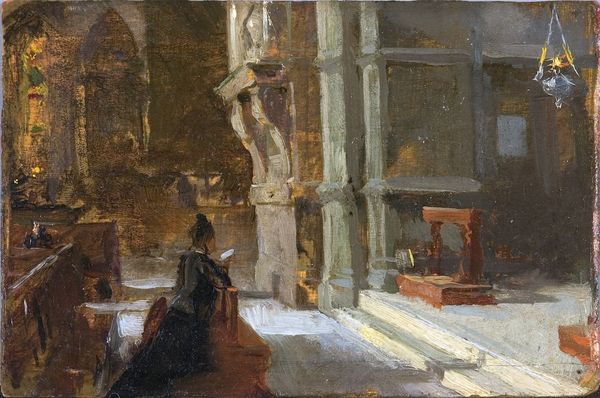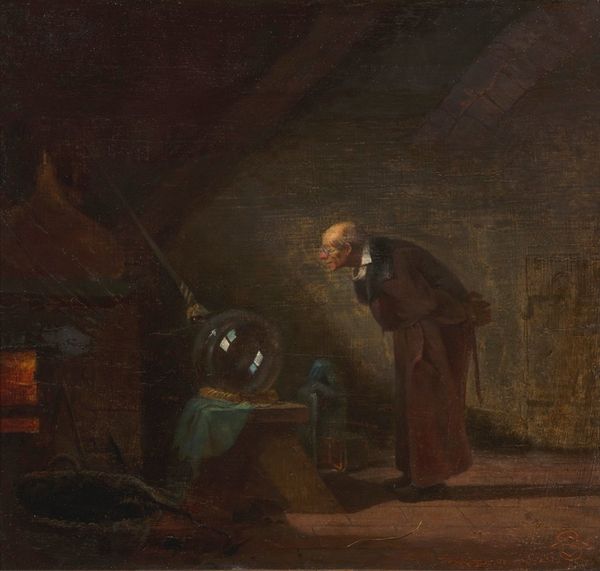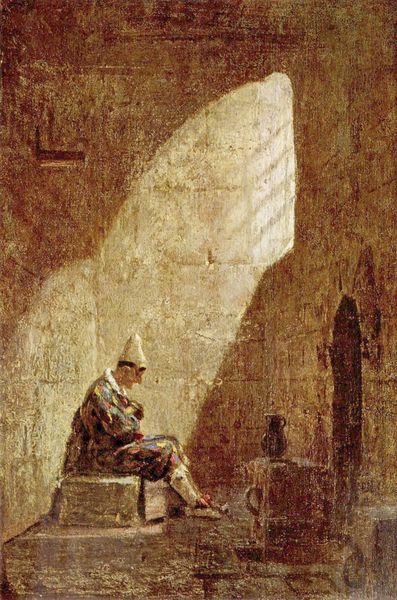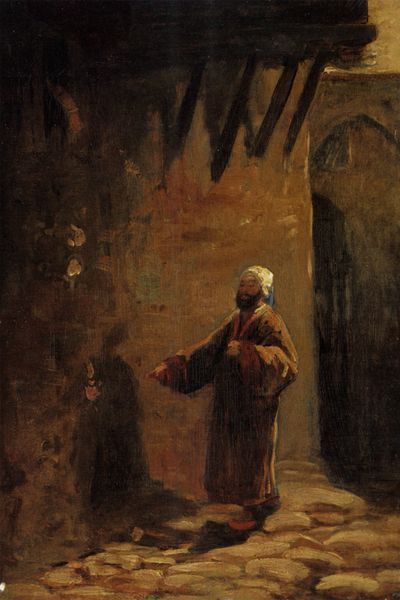
Dimensions: height 47.3 cm, width 34.5 cm, thickness 2.5 cm, depth 8.9 cm
Copyright: Rijks Museum: Open Domain
Curator: This is “A Monk Holding a Glass in a Cellar”, painted with oil paints by F. Taupel, likely sometime in the 1800s. Editor: It feels…claustrophobic. All those heavy arches and shadows, with only that small figure lit from… somewhere? It creates a potent, isolating atmosphere. Curator: Chiaroscuro was all the rage in those days. That interplay of light and shadow wasn't just about drama. For viewers, it signaled deeper symbolic meanings. The solitary monk illuminated might represent spiritual enlightenment or the flicker of hope amidst a dark night of the soul. Editor: I'm drawn to the space itself. Notice how Taupel frames the monk within the arched doorway and lit doorway? The setting becomes almost a character. Are we meant to think about monasteries, perhaps as sanctuaries of knowledge or even prisons of tradition? The artist would’ve shaped public perception of monastic life simply by exhibiting a painting like this. Curator: Precisely. He would rely on culturally established visual languages. Consider the glass in the monk’s hand. It evokes contemplation, discernment. Remember the glass isn’t a modern symbol but is often depicted with holy figures through different time periods of Christianity as a visual symbol. Editor: So it acts as an allegory then? What would ordinary viewers think about art featuring those themes back in the day, I wonder? How much of the image depended on viewers of the time understanding that language of symbolism? Did such genre paintings promote faith or piety, or did they question and analyze these older systems of authority? Curator: Good question! Those visual systems and common symbologies can, over time, become loaded and controversial. Images acquire cultural meanings as they circulate publicly. But back then? I suspect many recognized the potent connection. And as viewers, then and now, we can decode what they knew. Editor: It really gives you a feel for both artistic style and religious ideas that were common in Europe during the late Baroque movement, it's good food for thought. Curator: Indeed. I see layers of art and religion. This artwork reflects its culture and reveals echoes that still speak to us across time.
Comments
No comments
Be the first to comment and join the conversation on the ultimate creative platform.
